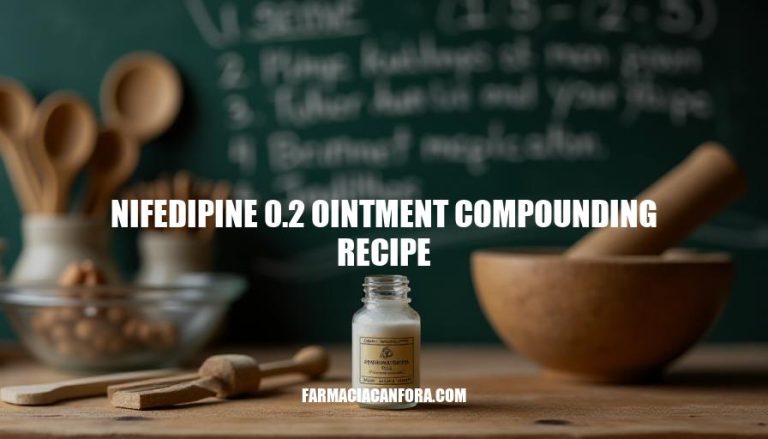


Nifedipine 0.2% ointment helps people with chronic anal fissures and Raynaud’s phenomenon feel better. It relieves pain and discomfort. To work well and be safe, the ointment needs to be made just right.
Pharmacists have to be careful when making it to get the concentration just right. This ensures the medicine does its job without causing problems.
Ingredients:
Nifedipine powder
Ethoxy diglycol
Lecithin:isopropyl palmitate 50:50 solution
Pluronic F-127 20% gel
Equipment:
Precision balance
Mortar and pestle
Spatula
Beaker
Stirring rod
Ointment jar
Instructions:
Calculate the required quantity of each ingredient.
Accurately weigh/measure each ingredient.
Levigate nifedipine with the ethoxy diglycol to make a smooth paste.
Add the lecithin:isopropyl palmitate 50:50 solution and mix thoroughly.
Add sufficient Pluronic F-127 20% gel to achieve the desired total volume.
Transfer the ointment to an ointment jar and label appropriately.
To prepare the nifedipine 0.2% ointment, pharmacists must carefully follow a specific recipe that involves precise calculations and measurements of each ingredient.
The ingredients include nifedipine powder, ethoxy diglycol, lecithin:isopropyl palmitate solution, and Pluronic F-127 gel.
The preparation process requires the use of specialized equipment such as a precision balance, mortar and pestle, spatula, beaker, stirring rod, and ointment jar. The steps involved in preparing the ointment include calculating the required quantity of each ingredient, accurately weighing/measuring each ingredient, levigating nifedipine with ethoxy diglycol to create a smooth paste, mixing in the lecithin:isopropyl palmitate solution, adding Pluronic F-127 gel to achieve the desired volume, and transferring the ointment to an ointment jar.
Precision is crucial in medical compounding to ensure that the final product has the correct concentration of active ingredients and meets the required standards for efficacy and safety. Any errors or deviations from the recipe can lead to suboptimal results or adverse reactions, highlighting the importance of careful attention to detail and adherence to established protocols in pharmaceutical compounding.